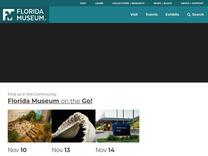Oldest-known ancestor of modern primates may have come from North America, not Asia – Research News https://www.floridamuseum.ufl.edu/science/oldest-primates-north-america/
About 56 million years ago, on an Earth so warm that palm trees graced the Arctic Circle, a mouse-sized primate known as Teilhardina first curled its fingers around a branch. The earliest-known ancestor of modern primates, Teilhardina’s close relatives would eventually give rise to today’s monkey
warming 56 million years ago is that it marks the origin of the group that ultimately led

